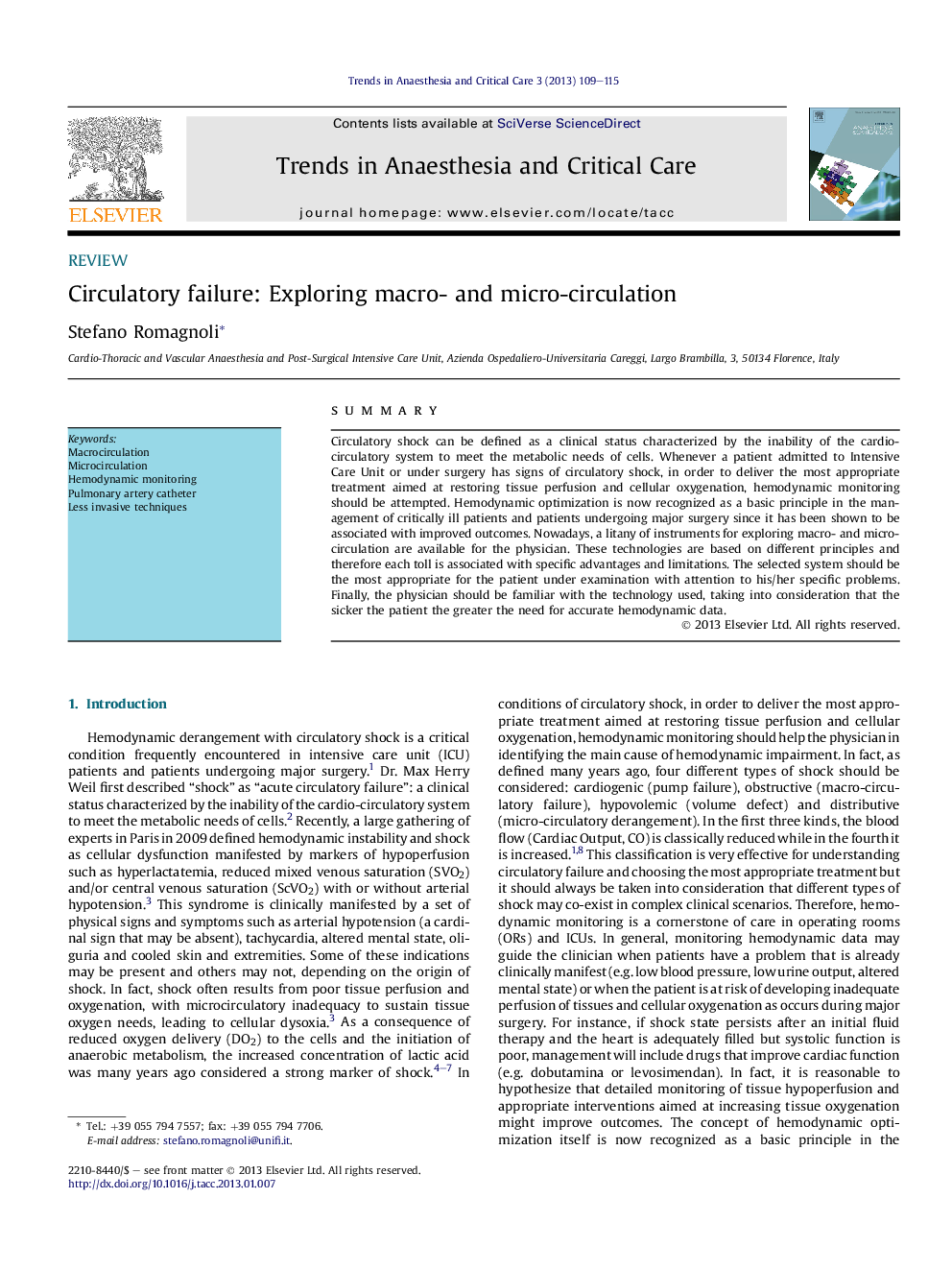| Article ID | Journal | Published Year | Pages | File Type |
|---|---|---|---|---|
| 2772794 | Trends in Anaesthesia and Critical Care | 2013 | 7 Pages |
SummaryCirculatory shock can be defined as a clinical status characterized by the inability of the cardio-circulatory system to meet the metabolic needs of cells. Whenever a patient admitted to Intensive Care Unit or under surgery has signs of circulatory shock, in order to deliver the most appropriate treatment aimed at restoring tissue perfusion and cellular oxygenation, hemodynamic monitoring should be attempted. Hemodynamic optimization is now recognized as a basic principle in the management of critically ill patients and patients undergoing major surgery since it has been shown to be associated with improved outcomes. Nowadays, a litany of instruments for exploring macro- and micro- circulation are available for the physician. These technologies are based on different principles and therefore each toll is associated with specific advantages and limitations. The selected system should be the most appropriate for the patient under examination with attention to his/her specific problems. Finally, the physician should be familiar with the technology used, taking into consideration that the sicker the patient the greater the need for accurate hemodynamic data.
